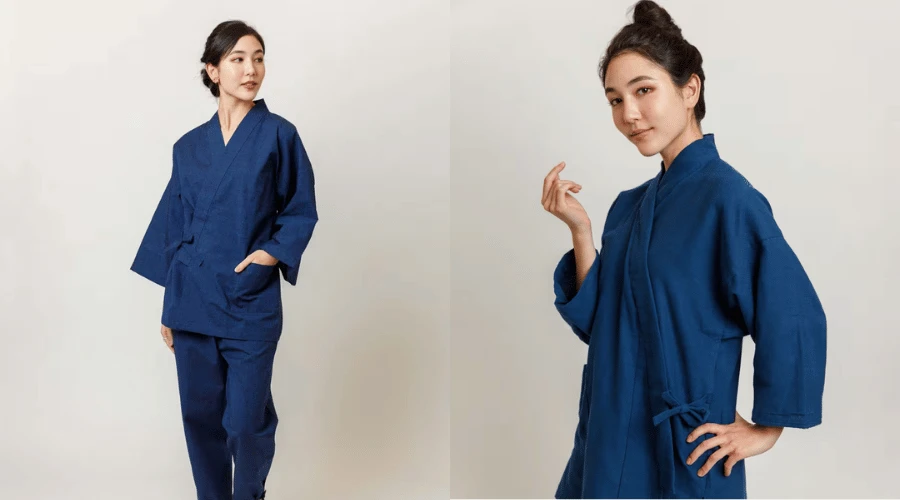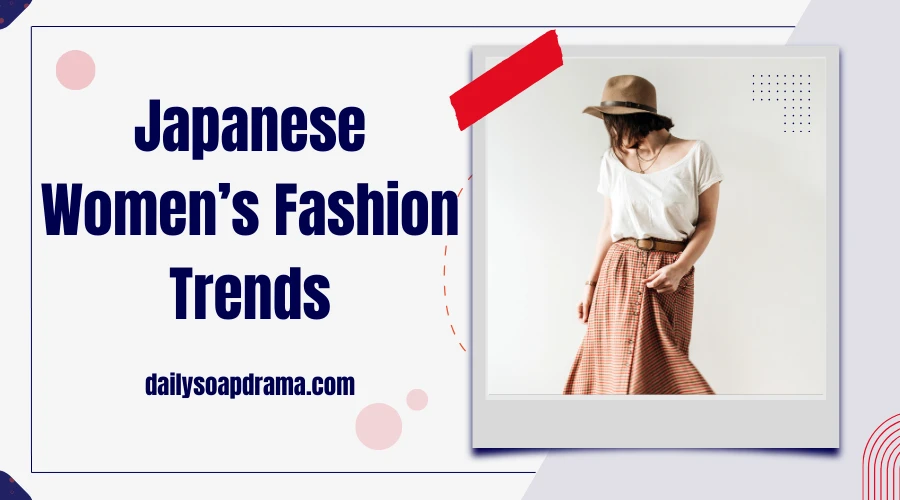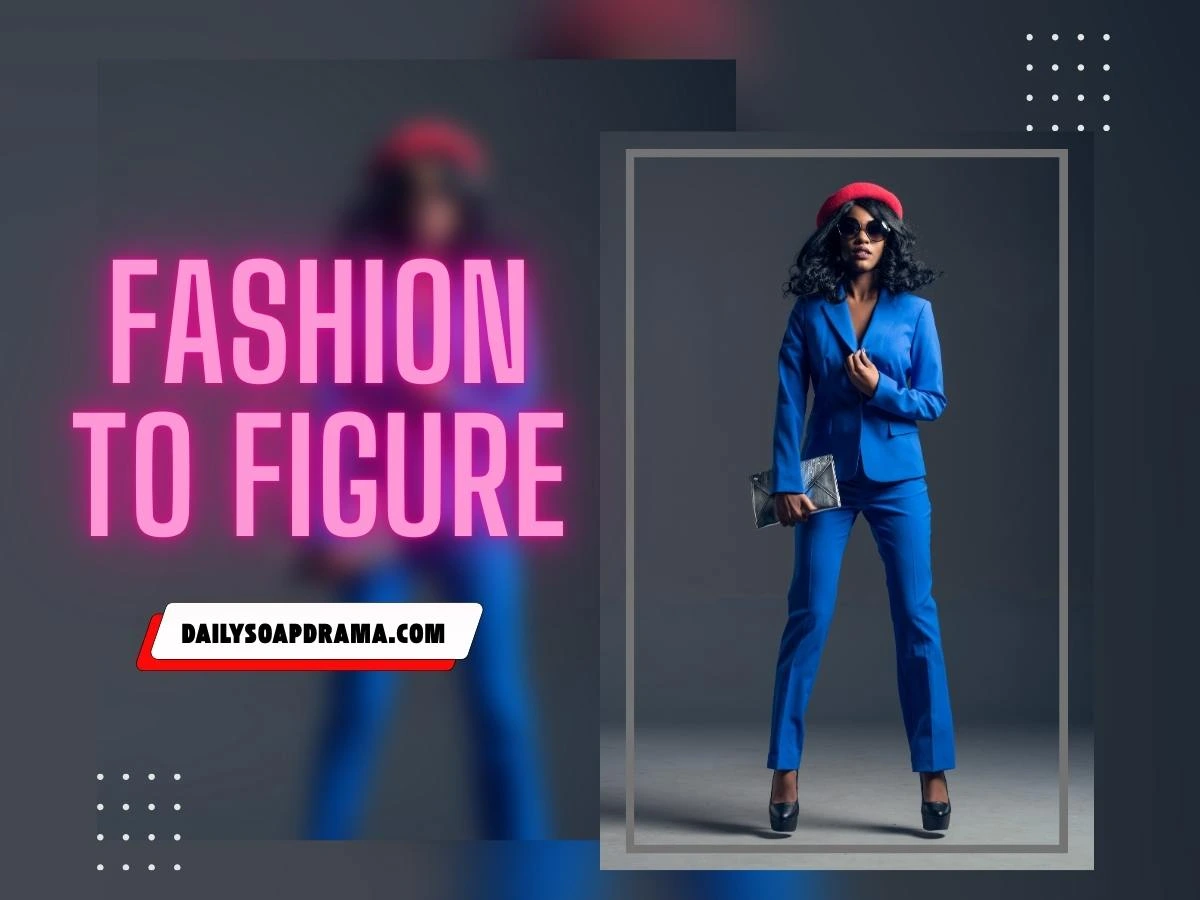Japanese women's fashion is unique in terms of fashion for its creativity, elegance, and daring styles. From traditional Japanese women's fashion to Tokyo fashion trends, there is so much to investigate! This guide will take you through the finest designs, companies, and trends whether you like Harajuku fashion or prefer Japanese minimalist fashion.
What Makes Japanese Women's Fashion Unique
Japanese women's fashion is a blend of the ancient and the current. It combines tendencies of modern Japanese dress with traditional Japanese kimono styles. Always evolving, the fashion scene is led by Japanese women's street fashion.
Why Is Japanese Fashion So Popular
-
Unique styles – From Japanese giant sweaters to Lolita fashion gowns, there’s something for everyone.
-
High-quality fabrics – Many Japanese women's clothing brands point out durability and comfort.
-
Bold and playful – Trends in Harajuku fashion feature vibrant hues and playful accessories.
Read also: Y2k Styling Denim On Denim Trends
20 You Will Want To Wear Traditional Japanese Clothes.
1. Kimono

The kimono is a traditional Japanese dress that many Japanese people wear every day and is becoming more famous around the world. The hakama, a long skirt with a divider, was first worn with the kimono. It was based on old Chinese clothing. But as tastes changed, the kimono became more popular without the skirt and worn with an obi to keep it together. Japan's refined grace and body-hugging shape forever reflect in the traditional and modern kimono, which people wear on important events.
2. Yukata

A yukata is a lighter summer kimono. It was originally a cotton swimming costume. The sash-tied yukata is easy to wear for men and women. Summer matsuri festivities feature this light kimono, popular for onsen bathing.
3. Hanten

During the Edo era, common people wore hantens, which are winter coats. Its history may be long, but its basic, minimalist style makes the jacket a versatile piece that fits into current wardrobes. The padded throw-over coat-jacket fits snugly yet flatteringly. Start adding Japanese flare to your wardrobe with our comprehensive guide.
4. Haori

A haori is a medium-length jacket worn over the kimono, a formal version of the hanten. Previously exclusively available to the wealthy, throughout the Sengoku era men wore sleeveless haori over their armor like tabards in Europe. In the 1800s, geisha encouraged women to wear the haori as a statement item.
5. Samue

Japanese Zen Buddhist clergy still wear the samue for careful physical exertion. Samu comprises mindfulness-promoting cooking, cleaning, and outdoor activity. The linen or cotton trousers and blouse are indigo blue or brown. Pure simplicity and meticulous design evoke Zen Buddhism. Learn about Samue with these 10 Things!
6. Kimonos

Kimono robes resemble yukatas, the more casual alternative of the kimono. The origins of kimono robes are linked to Japanese bathing culture, ryokans, and onsen hot springs. Japan has a bathing tradition dating back to the 12th century Kamakura era.
Modern ryokan yukata are easily worn with a waist tie, similar to a bath robe. No special undergarments, ties, or folds are needed.
7. Men's Nagajuban Robes

Men's nagajubans are worn under kimonos to maintain cleanliness and dryness. Many kimono undergarments are composed of white cotton or silk, but some antique ones include intricate hand-painted artworks, making them suitable for loungewear. Check out the collection here.
8. Obi

The obi, the sash that holds the kimono together, is sometimes ignored yet can be a distinct element of Japanese fashion when properly fashioned. There's an obi for every occasion and style, basic or flamboyant. Patterns might complement the kimono or contrast it. The kimono is a canvas for obi art in various ensembles. Women use the obi for decoration, hiding the cloth that holds the garment together.
9. Obijime

Decorative obijime is a braided cord wound around the obi and fastened at the front of the kimono. Today you may buy them, unlike formerly they were presents from patrons or lovers! Obijime is often used in modern kimono outfits and comes in many styles, colors, forms, and textiles. The most common obijime are silk.
10. Obidome

When used with obijime, an obidome is a little item strung through the obijime, similar to a bead or necklace pendant. Obidome designs range from modest wooden and clay beads to costly diamond, pearl, and ivory brooches. Early obidome were crafted from ornamented metal parts from Japanese swords. Obidome were formerly a casual addition to kimono, but many formal ones now have them.
11. Obligation
The final piece of the obi-trio is the obiage. Rolling the obiage like a silk scarf and inserting it between the kimono and obi belt adds color. This is used to conceal the obimakura strings, making the kimono seem neater and more attractive. Obiage is often composed of silk, polyester, or cotton and available in a wide range of colors to match the kimono.
12. Nagajuban

Under a kimono, a thin robe called a nagajuban is worn to maintain its cleanliness. The cotton or silk garment separates the kimono layers from the body. Nagajubans keep sweat away from kimonos, which are hard to clean, especially silk ones.Usually just the collar has a tiny white strip of nagajuban.
13. Tenugui
While modest in design, Tenugui is not in use or importance. As shown in Japan Objects magazine, this versatile cloth with beautiful Japanese motifs has several uses. It's used for gift wrapping, around the house, and as a headscarf by kendo warriors to keep their hair out of their face. Browse our tenugui collection to grab one for yourself!
14. Hakama

The hakama, based on Sui and Tang dynasty court trousers, before the kimono. Two varieties of hakama are undivided andon, a pleated skirt, and divided umanori, loose pants for horseback riding. The hakama's stature in Japan altered. While males wear hakama under their kimono for formal and informal gatherings, ladies only wear it for graduation ceremonies and traditional Japanese sports like aikido and kendo.
15. Michiyuki

The michiyuki, meaning 'traveling,' is worn over a kimono like a windbreaker for warmth and protection. While haori are worn kimonos, michiyuki offer protection with simple, unpatterned motifs. They typically feature square necklines front buttons. The coat's "michiyuki" collar is inspired by men's centuries-old traveling kimonos. Unlike haori, michiyuki are always closed worn outside.
16. Gakuran

Many manga and anime series depict the gakuran, a classic Japanese high school uniform. It consists of a long buttoned coat with an upstanding collar, full-length trousers, and black dress shoes. This outfit, now part of Japanese fashion, drew inspiration from European navy uniforms. Note that the female sailor fuku uniform, based on a similar design, includes a navy blue skirt, white blouse, and colorful neckerchief.
17. Tobi Pants

Japanese tradesmen often wear tobi, ultra-baggy pants that resemble 90s raver fashion rather than heavy-duty workwear. Kite, as in the bird of prey, derives from the slang nickname for high-rise construction workers that wear them. Loose fittings offer comfort, flexibility, and early notice of low-down items, preventing them from reaching a worker's legs. Tobi wearers can operate without looking down for impediments.
18. Kendogi
Kendo, a contemporary Japanese martial technique using bamboo swords and armor, uses kendogi. While the sport is rooted in ancient swordsmanship, the costume is inspired by samurai attire. The standard outfit includes hakama and a heavy jacket to absorb blows. Kendo requires proper posture, and the hakama's trapezoid back piece and belly button fastening bands help. Competitors wear armor to protect their heads, shoulders, arms, throat, and chest, like fencers.
19. Aikido
In the 1960s, a Japanese firm that specialized in Judo equipment invented and specified the current form of aikidogi. There are two basic varieties of aikidogi: one that resembles standard judogi with jacket and pants, and another that combines traditional hakama. Hakama jackets feature shorter sleeves and longer bodies, making them easy to tuck into. The lighter karategi jackets are also popular.
Read also: Street Style Avant Garde
Japanese Women's Casual Wear
Japanese women's casual clothing is elegant but comfortable. Think gorgeous shoes, cozy sweaters, and flowy jeans.
- A winter favorite are Japanese giant sweaters.
- Key is layering; the outfit is finished with light coats, scarves, and caps.
Best Brands for Casual Fashion
Among the best Japanese women's fashion labels for casual clothing are Uniqlo, GU, and Muji. Their easy, comfortable clothing is ideal for daily use.
Tokyo Fashion Trends: Where Street Style Shines
The center of Japanese women's street fashion is Harajuku. Here, you will discover:
- Lolita fashion dresses—frilly, doll-like garments.
- Playful accessories and vibrant wigs.
Shibuya Style: Chic and Modern
Trends are more Japanese minimalist fashion—clean lines, neutral colors, and simplified forms.
Seasonal Japanese Fashion Trends
Japanese Winter Fashion Trends
Winter in Japan demands for warm, fashionable clothing:
- Heavy jackets and Japanese oversized sweaters.
- Scarves and knee-high boots.
Japanese Summer Kimono Styles
Summer calls for airy, light clothing:
- Brightly patterned yukata (summer kimono).
- Festival sandals and straw hats.
Japanese Office Fashion for Women
Japanese workwear is professional and refined.
-
Skirts and blazers in neutral hues.
-
Loafers or simple heels.
Brands like as Theory and United Arrows provide excellent Japanese office fashion for women.
Where to Buy Japanese Women's Fashion
Japanese women's fashion is available in many locations and buying methods. Where to get these brands:
- UNIQLO (Japanese basics) – uniqlo.com
- SNIDEL / FRAY I.D / Lily Brown – (Japanese site, may need a proxy)
- Ambush – ambushdesign.com
Top Japanese Women's Fashion Brands
Luxury & High-End Brands
- Comme des Garçons – Rei Kawakubo founded this legendary company, which dominates high fashion with her avant-garde, deconstructed designs.
- Yohji Yamamoto – Yamamoto's ageless, gender-neutral designs are dark, lyrical, and immense.
- Issey Miyake – Innovative pleating and tech-forward textiles combine art and wearability.
Contemporary & Trendy Brands
- SNIDEL – A renowned "Japanese Feminine" fashion brand with romantic, charming, and complex designs.
- Lily Brown – Young ladies like vintage-inspired bohemian styles with a modern touch.
- FRAY I.D – Elegant, simple, and mature with precise tailoring.
Streetwear & Urban Fashion
- A Bathing Ape (BAPE) – Famous streetwear brand featuring camo designs, shark hoodies, and hip-hop inspirations.
- Neighborhood – Originally male, now unisex streetwear with a biker-inspired look.
- Ambush (by Yoon Ahn) – Fashion-forward streetwear and jewelry.
Minimalist & Sustainable Brands
- Mame Kurogouchi – Fine work using natural textiles and timeless patterns.
- 45R – Quality denim and indigo-dyed products with a sustainability focus.
- White Mountaineering – Functional outdoor fashion with urban chic.
Kawaii & Harajuku Style
- 6% DOKIDOKI – A pioneer of Harajuku's lively kawaii fashion.
- Liz Lisa – Lace, flowers, and pastels for doll-like apparel.
- Angelic Pretty – Lolita fashion icon with princess-like clothing.
Denim & Casual Wear
- Evisu – Premium Japanese denim with signature seagull logo detailing.
- Kapital – Bohemian, patchwork denim and eclectic, artisanal designs.
Final Thoughts: Why Japanese Fashion Inspires the World
Japanese women's fashion is a lovely mix of creativity and legacy. Whether you enjoy traditional Japanese kimono styles or Tokyo fashion trends, there is always something fresh to find. Check out DailySoapDrama for the newest trends and styles; your source for Japanese-inspired fashion!








